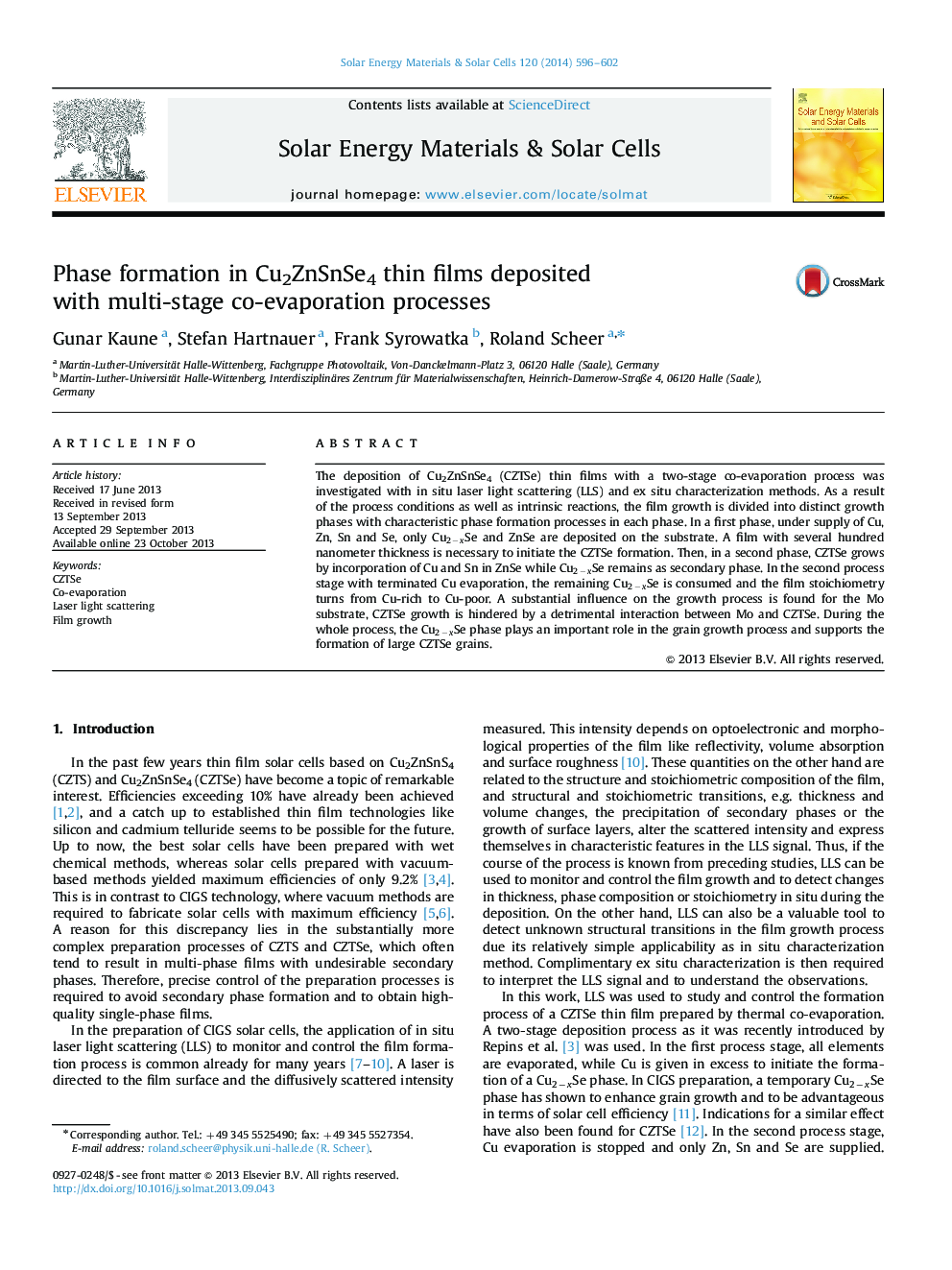| کد مقاله | کد نشریه | سال انتشار | مقاله انگلیسی | نسخه تمام متن |
|---|---|---|---|---|
| 78172 | 49319 | 2014 | 7 صفحه PDF | دانلود رایگان |

• Detailed investigation of film growth and phase formation processes during co-evaporation of CZTSe thin films.
• Subdivision of the process in distinct growth phases with characteristic phase formations.
• Chemical reaction between CZTSe and Mo hinders CZTSe growth in the initial stage of the process.
The deposition of Cu2ZnSnSe4 (CZTSe) thin films with a two-stage co-evaporation process was investigated with in situ laser light scattering (LLS) and ex situ characterization methods. As a result of the process conditions as well as intrinsic reactions, the film growth is divided into distinct growth phases with characteristic phase formation processes in each phase. In a first phase, under supply of Cu, Zn, Sn and Se, only Cu2−xSeCu2−xSe and ZnSe are deposited on the substrate. A film with several hundred nanometer thickness is necessary to initiate the CZTSe formation. Then, in a second phase, CZTSe grows by incorporation of Cu and Sn in ZnSe while Cu2−xSeCu2−xSe remains as secondary phase. In the second process stage with terminated Cu evaporation, the remaining Cu2−xSeCu2−xSe is consumed and the film stoichiometry turns from Cu-rich to Cu-poor. A substantial influence on the growth process is found for the Mo substrate, CZTSe growth is hindered by a detrimental interaction between Mo and CZTSe. During the whole process, the Cu2−xSeCu2−xSe phase plays an important role in the grain growth process and supports the formation of large CZTSe grains.
Journal: Solar Energy Materials and Solar Cells - Volume 120, Part B, January 2014, Pages 596–602